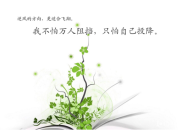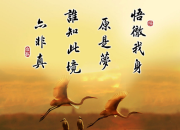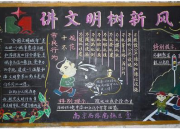英语课的说课稿
时间:2021-08-31在英语教学中,热身活动时的小律动是孩子们特别喜欢说和做的,而且回家后也喜欢表演,能很好地反映教学效果,大家不妨来看看小编推送的英语课的说课稿,希望给大家带来帮助!
英语课的说课稿【一】
各位评委老师:大家好
我说课的题目是Unit 2 How do you do?本课为口语课,整个说课我将分六个部分进行讲述。
一、说教材
我们所用的教材是中职课程改革国家规划新教材《英语》(基础模块-预备级)。本套教材共10个单元,每个单元都是围绕某一话题进行听、说、读、写的多种教学活动。本单元的教学重点为:招呼用语,听懂并掌握询问和提供个人信息的词汇、句型。本单元处于本册书较为靠前的位置,它属于日常生活话题,是学生较为常见到且比较感兴趣的内容之一,既贴近生活,又是训练学生口语表达能力的良好素材。本课的知识点是学生非常熟悉并乐于学习的,他们对本课的学习充满期待和兴趣。
1、教学目标
根据教材教学大纲以及学生的实际情况,将本课时的教学目标确定如下:
⑴掌握与个人信息相关的词汇
⑵掌握提供或询问个人信息时所使用的句型
学生能听懂、编写关于询问和提供个人信息的对话,辨别日常生活中不同的介绍和询问方式的使用对象、时间及场所。
1. 在真实情景交流中,师生间、生生间建立融洽的关系,主动参与、相互赏识。
2.培养学生对英语的正确态度,提高对英语的兴趣。
师者,教书育人。在实现前面三个目标的同时提倡礼貌待客,强调礼貌礼仪的重要性,鼓励学生言行文明,适时地将德育融进英语课堂。
2、教学重点
根据教学大纲要求及学生实际情况,本节课的教学重点是:打招呼用语,听懂并掌握询问和提供个人信息的词汇、句型。
3、教学难点
长期以来,传统的外语教学注重书本知识的讲授,而忽视了学生交际能力的培养,使许多学生不敢开口,羞于在众人前表达,因而口语比较薄弱。所以,我采用引导、激励、合作讨论等方法,鼓励学生大胆开口,运用所学句型与他人进行基本交流并获取信息,做到学以致用,这是本课的难点。
二、学情分析
我们的教学对象为职业学校的学生。学生普遍存在英语基础薄弱、词汇量少、羞于开口,对参与课堂活动缺少积极性这些问题。因此,在组织教学活动的过程中,要注重学习策略的指导,在练习的设置上先易后难,营造轻松的学习氛围,及时地给予表扬,激发学生的学习兴趣,鼓励学生积极参与课堂活动,同时帮助学生树立自信心。
三、教法
教法:基于新的教学理念,在教学过程中主要采取情感激励法、任务型教学法、直观法和合作学习法。根据单词的记忆规律,引导学生参与多种方式的单词呈现,循序渐进,由单词到短语,再到句子,运用课堂活动让学生在合作和体验中学习。在教学中注重师生之间的交流,适时调整策略,多给学生鼓励,合理调动不同层次学生学习的主动性,从而提高学生参与课堂活动的积极性,培养学习兴趣。
四、学法
教学相长,学生是学习的主体,应积极参与课堂活动,不害羞,多动口,掌握本课的重点,突破难点。在老师的指导下,把本课的知识转化为交际能力。做到学一句,会用一句,强调实用性,而不只是盲目背书。
五、教学程序
1、Lead-in (新课导入)
Good morning/afternoon/evening.
Hi. / Hello.
Nice to meet you.(设计意图:快速搜集多种招呼用语,并让全体同学尽快掌握)
2.让学生辨别与陌生人初次见面打招呼的基本方式。
3.设计意图:让学生了解初次见面时中西方的文化差异,并辨别在不同场合初次见面的交流模式。
2、Listening and speaking (听说学习)
1. Activity 3. What’s your name, please?
Your name, please?…
(设计意图:让学生辨别在不同场合面对不同人时询问姓名的基本方式。)
2. Activity 4. What’s your name, please?
Where are you from?
Which class are you in?
What’s your favorite sport?
What’s your hobby?
(设计意图:让学生进一步了解在不同场合下询问对方信息的方式。)
3、Summary and Production (总结与学习成果)
1. Make a short summary of what we’ve learned today.
(1)key vocabulary: surname, hometown, favorite
(2)everyday English about greetings .
Hi.
Good morning.
How are you?
Good morning./ Good afternoon./ Good evening…
(设计意图:集思广益让学生罗列10条问候语,并请学生当堂记忆。 明确数量,可以帮助学生记忆。)
4、 Homework(家庭作业)
1. Practice greeting people with your classmate after class.
2. Make an introduction of your classmate.
3. Introduce a hero in your mind to the class.
六、板书设计
英语课的说课稿【二】
教学目标和要求
本课是第2课时,教学目标主要是对课文中的对话进行阅读、巩固和拓展。要求通过学习,学生能达到以下要求:
1.知识目标
能够牢固掌握好课文对话中的重点词汇词组;阅读对话并且根据提示完成对话,运用已经学会知识让学生分角色进行口语练习,特别要求记忆Sarah所说的话并能当堂表演对话。能够拓展对话,根据图片内容创作一段对话。
2.能力目标
能够独立阅读课文对话,能够正确理解课文对话并根据提示完成对话,能够用英语表达歉意和接受道歉并学会为工作中所犯的错误致歉。能够拓展对话,完成看图说话并把每张图片的对话内容连在一起形成一段对话。
3.情感目标
通过小组讨论,培养同学们的交际能力和团队合作精神;
不同的教学目标和要求
A. 对于基础相对好的同学,能够阅读对话并且根据提示完成对话,运用已经学会知识让学生分角色进行口语练习,能当堂表演对话,能够拓展对话,根据图片内容创作一段对话。
B. 对于基础中等的同学,能够完成课文对话,分角色进行口语练习,能当堂表演对话。
C. 程度较弱的同学,要求能够熟练掌握课文中的生词和词组,能够正确完成课文对话。
教学重点
英语道歉和接受道歉的词汇及表达;学习英语在工作中犯错误的表达; 根据提示完成对话;表演对话;
教学难点
根据提示完成对话,表演对话,拓展对话,根据图片创作对话。
学情分析
该班部分学生英语基础比较好,部分比较薄弱,学习的主动性参差不齐,性格普遍也比较内向。
教学指导思想
鉴于以上情况,本人在教学活动中采用任务型教学,充分调动学生学习的主动性,积极性,自觉性,充分体现课堂上学生为主,教师为辅,师生互动的指导思想,让每一个学生都能"动"起来,不同层次的学生都能有一定的提高。
教学活动
热身练习:整堂课的教学活动设计是由易到难的。先复习上节课所学到的表达道歉和接受道歉的句型,要求学生能回顾出英语的表述形式,为之后的教学活动先做一个热身练习。
活动一: work in pairs to discuss how to express your apologies to someone for doing wrong things and how to accept an apology,write on the board the sentence patterns.
活动二: learning words and expressions, then do words exercises
活动三: Complete the conversation of the text by using the words given as clues
Background introduction of the conversation:
Sarah : the secretary of Mr. Black
Mr.Black: the general manager of the company
在sarah 准备的一份文件中,Mr. Black发现了打印错误:去年产品的产量应该是28,000,而不是23,000.因为这份报告要提交董事会,所以Mr.Black不希望有任何差错
Encourage the students to read the text, then try to find their answers.
活动四:Let the students read the text again, then role-play the conversation with their
partner
1)组织学生两人一组练习对话
2)让各组学生分角色进行练习对话,要求特别记忆Sarah所说的话
3)选择几组学生进行当堂表演
活动五:Language points in the conversation
1)find some mistakes 发现错误
2)make mistakes 犯错误
3)all the details to be correct 被纠正的细节
4)accept my apologies 接受我的道歉
5)such a short time 如此短的时间
6)I realize how hard it was for you to finish the report within such a short time. 我意识到让你在如此短的时间内完成报告是多么难啊
7)This won`t happen again. 这个不会再次发生了。
活动六:Complete the task (wok in groups )
Class work :Make a conversation on the basis of each of the pictures. Then put them together.
教法
本节课采用的是互动(interactive)、交流(communicative)等教学方法,教学中以学生为主体。
学法
课堂教学以学生为主体,尽可能给学生多一些活动的余地,多一些表现自我的机会,多一份尝试成功的喜悦,让学生自始自终参与到知识形成的全过程中,将"一言堂"变成"群言堂",让他们通过合作学习法(cooperative learning)、互动学习法(interactive learning)来完成课堂任务。
《Making Apologies》教学设计
Teaching Aids: Multi-media
Teaching Aims:
1. Students will be able to grasp the key words and phrases in apologizing and
accepting an apology.
2. Students will be able to read the test, and learn to discuss apologizing for mistakes
made at work in English.
3. Students will be able to perform(role-play) the conversation by using the words
given as clues with their partner.
4. Picture talk (practising speaking)。
5. By learning this text, the students can apologize to someone and accept an apology
in English.
Teaching Procedures:
Step 1 work in pairs to discuss how to express your apologies to someone for doing wrong things and how to accept an apology
Write on the board : To apologize to someone, we say
I`m terribly sorry
I`m sorry…
I`d like to apologize for…
I must apologize to you for…
Please pardon / forgive me.
To accept an apology, we say
Don`t worry about it.
That`s all right.
Never mind.
Your apologies are accepted.
Step2 words and phrases
1. annual adj. 2. detail
一年一次的, 每年的, 一年生的 n. 详情,细节
annual report
年度报告
annual output There is too much detail in his speech.
他的讲话太琐碎了。 年产量
3.Submit vt. 4. mistype
提交, 递交
submit a plan 5. fault n.
提出一项计划 过错, 缺点,
submit a case to the court
向法院提出诉讼
Fill in the blanks with the words and expressions given above
1) It`s not your fault.
2) I think that the annual output of our new products last year was 28,000.
3) I want all the details to be correct before the report is submitted.
4) I must have mistyped.
Step3 Complete the conversation by using the words given as clues
Background introduction of the conversation:
Sarah : the secretary of Mr. Black
Mr.Black: the general manager of the company
在sarah 准备的一份文件中,Mr. Black发现了打印错误:去年产品的产量应该是28,000,而不是23,000.因为这份报告要提交董事会,所以Mr.Black不希望有任何差错
Encourage the students to read the text, then try to find their answers.
Let the students discuss their answers. Then the teacher gives the correct answers on the board
Step4 Let the students read the text again, then role-play the conversation with their partner
1)组织学生两人一组练习对话
2)让各组学生分角色进行练习对话,要求特别记忆Sarah所说的话
3)选择几组学生进行当堂表演
Step 5 Language points in the conversation
1)find some mistakes 发现错误
2)make mistakes 犯错误
3)all the details to be correct 被纠正的细节
4)accept my apologies 接受我的道歉
5)such a short time 如此短的时间
6)I realize how hard it was for you to finish the report within such a short time. 我意识到让你在如此短的时间内完成报告是多么难啊
7)This won`t happen again. 这个不会再次发生了。
Step 6 Complete the task (wok in groups )
Class work :Make a conversation on the basis of each of the pictures. Then put them together.
Mrs. Adams is in Sarah`s office waiting to see Mr. Black. Forgetting Mr. Black is still talking with another client, Sarah opens the door. She apologizes to Mr. Black. Back in her office, Sarah explains to Mrs. Adams that she`d better make an ap;pointment for tomorrow.
encourage the students to follow the example , talking about the pictures
Discuss in groups, after that let some students come to the front to perform
Example: Sarah: Mr. Black, Mrs. Adams wants to see you!
Mr.Black: What? Does she have an appointment? I`m busy now.
Sarah: No, she doesn`t. But she has been waiting here for quite some time.
Mr. Black: Sarah, what`s the matter? You know I`m busy at the moment.
Sarah: I`m sorry. I got my time wrong. I thought the first client had left! I`m terribly sorry.
Sarah: Mrs. Adams, I`m sorry. Mr Black is busy at the moment, and I`m afraid he can`t see you today. But you can make an appointment for tomorrow.
Mrs. Adams: OK. If that`s the case, I`ll do what you suggest.
Step 7 Conclusion
Today we have learned some new words and phrases , then we learned how to express apologies to someone and accept an apology and learned to discuss apologizing for mistakes made at work in English.
After learning these, the students can apologize to someone for doing something wrong and accept an apology when someone make apologies in English.
Step 8
Homework
Read and recite vocabularies
Copy vocabularies
Oral task: practicing picture talk











